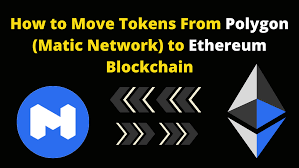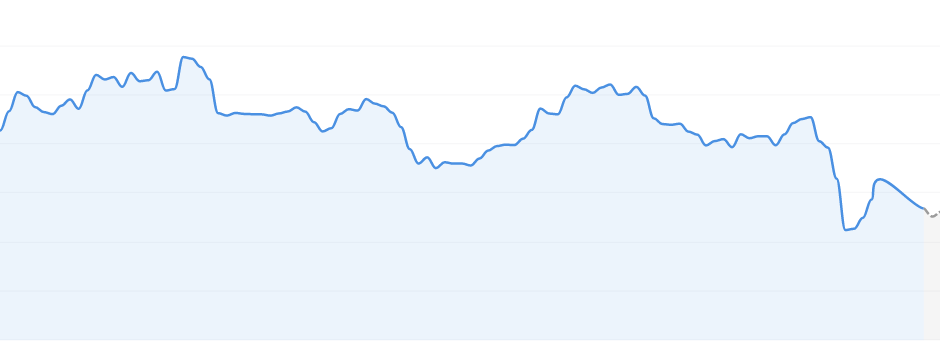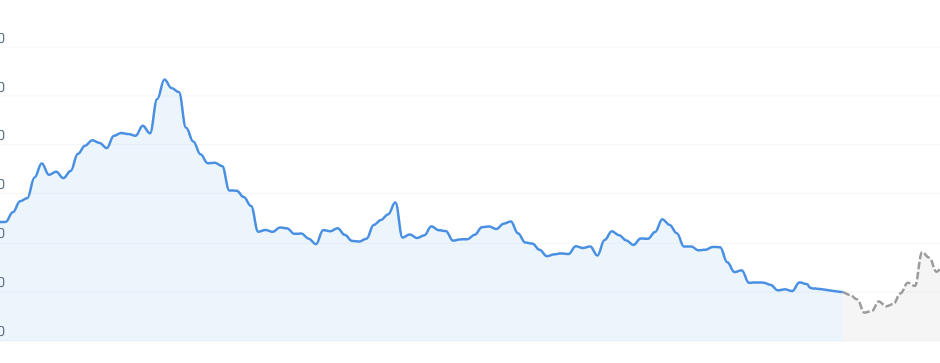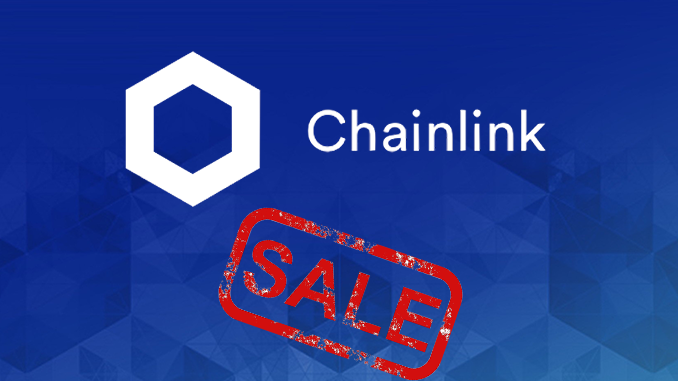In the vibrant and ever-expanding universe of cryptocurrencies, the ability to adeptly maneuver between diverse digital assets is not just a skill but a vital strategy for any discerning crypto enthusiast or investor. This comprehensive exploration delves into the specifics of exchanging Bitcoin (BTC), the original torchbearer of the cryptocurrency world, for Immutable X (IMX), a rising star in the realm of digital assets. This journey from BTC to IMX is more than a mere transaction; it represents a fascinating shift from the pioneering cryptocurrency to an innovative platform revolutionizing the world of NFTs and digital collectibles.
Understanding Bitcoin and Immutable X
Before we embark on the exchange process, it is essential to grasp the fundamental natures of BTC to IMX exchange. Bitcoin, created in 2009 by the enigmatic Satoshi Nakamoto, is the original decentralized cryptocurrency. It introduced the world to blockchain technology and has since become synonymous with digital currency, often revered as the ‘gold standard’ of the crypto world.
Immutable X, in contrast, is a newer entrant in the cryptocurrency space. Built on Ethereum, it presents itself as the first layer-two scaling solution for NFTs on Ethereum, aiming to provide instant trade confirmation, massive scalability, and no gas fees — all while maintaining the security of the Ethereum blockchain. It is designed to be a game-changer in the NFT marketplace, addressing issues of scalability and environmental impact.
Why Exchange BTC for IMX?
The decision to exchange BTC for IMX can be motivated by several factors. Some may see IMX as a strategic investment in a burgeoning new platform with significant potential in the NFT space. Others might be attracted to Immutable X’s focus on sustainability and zero gas fees, aligning with a broader trend towards eco-friendly blockchain solutions. Additionally, diversifying a crypto portfolio by including both the established value of BTC and the promising innovation of IMX can be a smart investment strategy.
The Exchange Process: A Detailed Guide
- Secure Your Wallets: First, ensure you have secure wallets for both BTC and IMX. Since IMX is an ERC-20 token, you will need an Ethereum-compatible wallet for it.
- Choosing the Right Exchange: Select a cryptocurrency exchange that supports both BTC and IMX transactions. Factors to consider include security, transaction fees, liquidity, and ease of use.
- Initiate the Exchange: Deposit your BTC into the chosen exchange. Navigate to the exchange section and select the BTC/IMX trading pair. Enter the amount of BTC you wish to convert to IMX.
- Executing the Trade: Review all transaction details, including the exchange rate and any fees. Confirm the transaction to execute the trade.
- Receiving IMX: Once the trade is processed, the IMX will be credited to your exchange wallet. For enhanced security, it’s advisable to transfer your IMX to your personal Ethereum-compatible wallet.
Timing and Market Insights
The timing of your exchange can significantly impact the outcome, given the volatile nature of cryptocurrency markets. Keeping an eye on market trends, news, and analyses can help in making an informed decision. However, predicting market movements is challenging, so a balanced approach and risk assessment are advisable.
Prioritizing Security
Security is paramount in cryptocurrency exchanges. Use platforms with robust security measures, keep your private keys secure, and be cautious of phishing scams.
Understanding Legal and Tax Implications
It’s important to be aware of the legal and tax implications of cryptocurrency exchanges in your jurisdiction. Cryptocurrency regulations can vary greatly, and staying compliant is crucial. Consider consulting with a financial advisor to understand your obligations.
The Potential of Immutable X
Immutable X is carving a niche in the rapidly growing NFT market. Understanding its technology, partnerships, and the evolving NFT landscape can provide valuable insights into its potential growth and long-term viability.
Conclusion: A Strategic Transition in the Crypto Landscape
Exchanging BTC for IMX is a journey that epitomizes the dynamic and evolving nature of the cryptocurrency market. It’s a move that goes beyond financial gains, reflecting an understanding and belief in the future of blockchain technology, particularly in the NFT and digital collectibles space. Whether motivated by investment diversification, belief in sustainable blockchain solutions, or interest in the burgeoning world of NFTs, this exchange represents a significant step in any crypto enthusiast’s journey, highlighting the continuous innovation and growth in the exciting world of digital currencies.
Introduction
As the world of cryptocurrency continues to evolve, one action that’s becoming increasingly common is token swapping. Among the popular tokens are MATIC (Polygon) and Ethereum (ETH), two blockchain platforms that have risen to prominence due to their unique offerings in the decentralized ecosystem. If you’re wondering how to swap MATIC to ETH efficiently, you’re at the right place. This article will take you through the process in detail, covering the technology, the methods, and the considerations you should be aware of.
Background: What Are MATIC and ETH?
MATIC (Polygon)
MATIC, now known as Polygon, started as a Layer-2 scaling solution for the Ethereum network. It aims to provide faster and more cost-effective transactions. Polygon has evolved into a multi-chain ecosystem that hosts a variety of decentralized applications (dApps), making it often referred to as the “Ethereum’s Internet of Blockchains.”
Ethereum (ETH)
Ethereum needs little introduction. As a pioneering blockchain platform, it introduced smart contracts, which are self-executing contracts with the terms written into lines of code. Ethereum has its native cryptocurrency called Ether (ETH), which serves as both a digital currency and a fuel for the network’s computations.
Why Swap MATIC to ETH?
There are various reasons why one might want to swap MATIC for ETH:
- Asset Diversification: Holding different types of assets can help mitigate risks.
- Participation in dApps: Some applications are only available on one of these platforms.
- Investment: You might want to move your investments based on your analysis of the two coins.
- Trading: Some traders might swap MATIC to ETH to take advantage of price differences between markets.
How to Swap MATIC to ETH: The Methods
Centralized Exchanges
- Binance: One of the most popular crypto exchanges, where you can trade MATIC for ETH easily.
- Coinbase: Known for its user-friendly interface, Coinbase is another platform where you can swap MATIC and ETH.
- Kraken: Offering robust security features, Kraken allows trading between MATIC and ETH.
Steps:
- Registration: You’ll need to register and complete KYC procedures.
- Deposit: Deposit MATIC tokens into your exchange wallet.
- Trading: Navigate to the trading pair (e.g., MATIC/ETH) and place an order.
- Withdrawal: After successful trading, withdraw your ETH to your personal wallet.
Decentralized Exchanges (DEXs)
- Uniswap: An Ethereum-based DEX where you can directly swap MATIC and ETH without an intermediary.
- Sushiswap: Similar to Uniswap, it offers additional features like yield farming.
- QuickSwap: A Layer-2 DEX on Polygon, ideal for swapping MATIC to ETH at low fees.
Steps:
- Connect Wallet: Connect your crypto wallet like MetaMask to the DEX.
- Select Tokens: Choose MATIC as the input and ETH as the output.
- Swap: Confirm the transaction, and the DEX smart contract will handle the rest.
Through a Crypto Wallet
Some modern crypto wallets like MetaMask and Trust Wallet have built-in swapping features. Here, swapping can be as simple as a few clicks. However, the rates might not be as competitive.
Fees, Rates, and Slippage
Centralized Exchanges
- Trading Fees: Usually ranges between 0.1% – 0.5%.
- Withdrawal Fees: Can vary depending on the network condition.
Decentralized Exchanges
- Gas Fees: Transaction fees can fluctuate based on network congestion.
- Liquidity Provider Fee: Typically around 0.3% per trade.
Slippage: In both centralized and decentralized exchanges, slippage can affect your trades. It refers to the difference between the expected price and the executed price of a trade.
Security and Risks
- Smart Contract Risks: When using a DEX, you’re relying on smart contracts which could have vulnerabilities.
- Regulatory Risks: Always ensure that your activities are compliant with your jurisdiction’s laws.
- Volatility: Cryptocurrency prices can be extremely volatile. Be sure you’re comfortable with the risk before swapping.
Final Thoughts
Swapping MATIC to ETH is a straightforward process but requires attention to various factors including fees, slippage, and the method you choose for the swap. Whether you’re doing it for trading, diversification, or participation in platform-specific activities, always make informed decisions. With the ever-growing ecosystems of both Polygon (MATIC) and Ethereum (ETH), the need for such swaps is likely to increase, making it a crucial operation in the crypto sphere. Always remember to consider your options carefully and ensure that you’re using secure and reputable platforms for any crypto transactions.
In the intricate world of cryptocurrencies, Chainlink has emerged as an interesting prospect. It is a decentralized oracle network designed to bridge the gap between smart contracts on the blockchain and real-world applications. This article will delve into the intricacies of our recent Chainlink price prediction, shedding light on the seemingly contradictory market sentiment and its implications for potential investors.
Based on our current prediction model, the value of Chainlink is expected to decrease by approximately -7.88%, falling to around $6.04 by July 10, 2023. It’s worth noting that this prediction relies on a set of technical indicators and historic market patterns. Nevertheless, the intrinsic volatility of cryptocurrencies often leads to considerable price fluctuations.
According to our technical indicators, the current market sentiment for Chainlink is bearish. This essentially means that there seems to be a trend favoring selling over buying, usually suggesting worries or a lack of confidence in the asset’s near-term performance. Factors contributing to a bearish sentiment can include broader market trends, regulatory news, or technological advancements, among others.
Paradoxically, the Fear & Greed Index for Chainlink currently stands at 61, which falls under the ‘Greed’ category. This presents an intriguing contradiction between the bearish sentiment and the high Fear & Greed Index, underlining the complex and often counterintuitive nature of the cryptocurrency market. A high Fear & Greed Index suggests that investors are primarily driven by potential high returns despite the inherent risks, which could also indicate a level of overconfidence that might precede a market correction.
Over the past month, Chainlink has recorded 17 green days out of 30, marking a positive trend for 57% of the time. A ‘green day’ in trading refers to a day when the price of the cryptocurrency has increased from the previous close. However, this positive performance comes against a backdrop of 8.37% price volatility over the past 30 days. While high volatility is a common characteristic in the cryptocurrency market, it serves as a stark reminder of the risk and unpredictability of these investments.
Taking these factors into account, our current Chainlink forecast suggests that this may not be an ideal time to invest in Chainlink. The anticipated decline in value, coupled with the prevailing bearish sentiment, seem to indicate potential pitfalls for new investments. However, it’s crucial to remember that in the ever-evolving cryptocurrency market, such predictions should be used as a guide, not an absolute truth.
For those with a belief in the long-term potential of Chainlink, this forecasted price drop could present a buying opportunity. The expected dip might offer a more enticing entry point for investors willing to brave the short-term volatility in the hopes of achieving long-term gains. Cryptocurrency history is filled with examples of major rebounds following significant price drops.
In conclusion, while the near-term forecast for Chainlink may look challenging, the long-term future of cryptocurrencies, including Chainlink, is subject to swift and often unforeseen changes. As with all investments, conducting thorough research, staying informed about market developments, and potentially seeking advice from financial professionals is vital. The key to navigating the tumultuous cryptocurrency market is to stay updated, understand the volatility, and adapt to changes as they occur. Investing in digital currencies may not be straightforward, but for those who can decipher its intricacies, the potential rewards can be substantial.
The world of cryptocurrency is a labyrinth of highs and lows, and currently, Chainlink seems to be on a downward slope. Our recent Chainlink price prediction suggests a decrease of -1.90%, taking the cryptocurrency’s value to an estimated $6.10 by June 12, 2023. This projection is based on a myriad of technical indicators that provide insight into the potential movement of the market.
Currently, the market sentiment around Chainlink is predominantly bearish. In the realm of trading, this sentiment signals a majority belief that the market will continue to drop, leaving potential investors to reconsider their position.
Additionally, the Fear & Greed Index, which helps us gauge the market’s emotional state, stands neutral at 53. The Fear & Greed Index is a critical tool in the world of cryptocurrency trading, allowing us to understand whether the market is being driven by excessive fear or greed. At the moment, it indicates a state of balance, but unfortunately, this doesn’t seem to bode well for a positive shift in Chainlink’s value.
Over the past 30 days, Chainlink’s performance showed 15 green days out of 30, making up 50% of the time. In these 30 days, Chainlink’s price volatility stood at 1.95%. While price volatility can sometimes present buying opportunities, the bearish sentiment and neutral Fear & Greed Index currently suggest it’s not the most favorable time to buy Chainlink, as per our forecast.
As always, it’s crucial for potential investors to remember that the cryptocurrency market is highly unpredictable. Detailed research and due diligence are always recommended before making any investment decisions.
Our present prediction for the price of Chainlink suggests an anticipated increase of 9.37%, with its value expected to hit $7.07 by May 16, 2023. Current technical indicators imply a Bearish sentiment, while the Fear & Greed Index displays a Neutral value of 52. Chainlink has had 14 green days out of the past 30, equivalent to 47%, accompanied by a price volatility of 6.36%. Based on our Chainlink prognosis, it’s currently not an ideal time to invest in Chainlink.
Disclaimer: This content is not intended as investment advice. It’s provided for informational purposes only. No content, materials, services, or other information on this page should be construed as a solicitation, endorsement, recommendation, or any form of financial, investment, or other advice. Always consult with a professional in legal, financial, and fiscal matters before making any investment decisions.
Chainlink (LINK) is a decentralized oracle network that provides real-world data to smart contracts on the blockchain. The Chainlink network has gained significant popularity in recent years, with many developers and users turning to it for its reliable data and efficient services. If you own Chainlink and want to exchange it for other cryptocurrencies or fiat currency, you may be wondering where to start. In this article, we will provide a comprehensive guide on how to exchange Chainlink (LINK).
What is Chainlink (LINK)?
Chainlink is a decentralized oracle network that connects smart contracts to real-world data sources, enabling them to access reliable and accurate information. The Chainlink network offers secure and efficient services, making it an attractive option for developers and users who want to build and use decentralized applications (dApps) on the blockchain.
How to Exchange Chainlink (LINK)
To exchange Chainlink for other cryptocurrencies or fiat currency, you will need to follow these steps:
Step 1: Choose a Cryptocurrency Exchange
The first step in exchanging Chainlink is to choose a cryptocurrency exchange that supports LINK. There are several exchanges that support LINK, including Binance, Kraken, and Coinbase. When choosing an exchange, consider factors such as trading fees, security, and reputation.
Step 2: Create an Account
Once you have chosen an exchange, you will need to create an account. The account creation process may vary depending on the exchange, but typically you will need to provide personal information such as your name, email address, and a password.
Step 3: Verify Your Identity
Most cryptocurrency exchanges require users to verify their identity before they can start trading. This is to comply with Know Your Customer (KYC) and Anti-Money Laundering (AML) regulations. You will need to provide identification documents such as a passport or driver’s license to verify your identity.
Step 4: Deposit Chainlink (LINK)
Once your account is set up and your identity is verified, you can deposit LINK into your exchange wallet. To do this, go to the deposit section of the exchange and find LINK in the list of supported cryptocurrencies. Copy the deposit address and send LINK from your personal wallet to the exchange wallet.
Step 5: Exchange Chainlink (LINK) for Another Cryptocurrency or Fiat Currency
Now that you have LINK in your exchange wallet, you can exchange it for another cryptocurrency or fiat currency. To do this, go to the trading section of the exchange and find the LINK trading pair you want to trade. For example, if you want to exchange LINK for Bitcoin (BTC), find the LINK/BTC trading pair. Enter the amount of LINK you want to trade and submit the order. The exchange will execute the trade, and you will receive the new cryptocurrency or fiat currency in your exchange wallet.
Step 6: Withdraw Your Funds
Once you have exchanged LINK for another cryptocurrency or fiat currency, you can withdraw your funds from the exchange. To do this, go to the withdrawal section of the exchange and find the cryptocurrency or fiat currency you want to withdraw. Enter the withdrawal address and amount, and submit the withdrawal request. The exchange will process the withdrawal, and you will receive your funds in your personal wallet.
Tips for Exchanging Chainlink (LINK)
- Choose a reputable exchange: When exchanging Chainlink, it is essential to choose a reputable exchange with a good track record. This will ensure that your funds are safe and that you receive the best possible exchange rate.
- Keep your personal information secure: It is important to keep your personal information secure when using a cryptocurrency exchange. Use strong passwords and enable two-factor authentication to protect your account.
- Consider the fees: Each exchange has its own fee structure, so it is important to consider the fees when choosing an exchange. Look for an exchange with low fees to maximize your profits.
- Use a personal wallet: When exchanging Chainlink, it is recommended to use a personal wallet to store your cryptocurrency. This will give you more control over your funds and reduce the risk of losing your cryptocurrency due to exchange hacks or other security breaches.
- Be patient: Cryptocurrency exchange transactions can take some time to process, be patient and wait for the transaction to be confirmed before making any further trades or withdrawals.
Conclusion
Exchanging Chainlink (LINK) for other cryptocurrencies or fiat currency is a straightforward process that can be done through a cryptocurrency exchange. By following the steps outlined in this guide, you can easily exchange LINK and take advantage of its reliable data and efficient services. Remember to choose a reputable exchange, keep your personal information secure, consider the fees, use a personal wallet, and be patient when making trades or withdrawals. With these tips in mind, you can make the most of your Chainlink investment and participate in the growing world of decentralized applications.
Introduction:
Chainlink (LINK) is a decentralized blockchain platform that connects smart contracts to real-world data. The platform has gained a lot of popularity over the years due to its innovative technology and partnerships with major players in the blockchain space. If you have invested in Chainlink and are wondering how to sell it, this guide will take you through a step-by-step process of selling your Chainlink cryptocurrency.
Step 1: Choose a Crypto Platform
To sell your Chainlink cryptocurrency, you need to find a platform that supports the trading of Chainlink. There are several cryptocurrency platforms available in the market, but not all of them support Chainlink. Therefore, it is crucial to choose a platform that supports the trading of Chainlink. ChangeHero is a great option as it is a reliable and secure platform that supports the trading of Chainlink.
Step 2: Create an Account
To sell your Chainlink cryptocurrency, you need to create an account on the platform of your choice. The account creation process is relatively simple and straightforward. All you need to do is provide your email address and create a strong password. Once you have created your account, you will be required to verify your identity. The verification process varies depending on the platform you choose. Some platforms may require you to provide a government-issued ID, while others may ask for a selfie.
Step 3: Deposit Your Chainlink
Once you have created an account and verified your identity, the next step is to deposit your Chainlink cryptocurrency. To do this, you need to navigate to the deposit section of your account and copy your Chainlink wallet address. You can find your wallet address by clicking on the Chainlink tab on the platform you chose. Once you have copied your wallet address, you can then transfer your Chainlink from your external wallet to the platform.
Step 4: Choose a Trading Pair
After depositing your Chainlink cryptocurrency, the next step is to choose a trading pair. A trading pair is a combination of two currencies that you can trade. In this case, you need to select the trading pair that includes Chainlink. For instance, if you want to sell your Chainlink for Bitcoin, you need to choose the LINK/BTC trading pair.
Step 5: Place a Sell Order
Once you have chosen your trading pair, the next step is to place a sell order. To do this, you need to navigate to the trade section of the platform you have chosen. Here, you will see the trading pairs available, and you can select the one that you want to trade. Next, you need to enter the amount of Chainlink you want to sell and the price at which you want to sell it. Once you have entered the details, you can then place your sell order.
Step 6: Confirm the Trade
After placing your sell order, you will be required to confirm the trade. This step is crucial as it ensures that you are selling your Chainlink at the right price. Once you have confirmed the trade, the platform will execute the order, and your Chainlink will be sold.
Step 7: Withdraw Your Funds
The final step is to withdraw your funds from the platform. To do this, you need to navigate to the withdrawal section of your account and select the currency you want to withdraw. You will then be required to enter your external wallet address and the amount you want to withdraw. Once you have entered the details, you can then submit your withdrawal request.
Conclusion:
Selling Chainlink cryptocurrency is a relatively simple process that
can be done by following the steps outlined above. However, it is important to keep in mind that the cryptocurrency market is highly volatile, and the value of Chainlink can fluctuate rapidly. Therefore, it is important to keep an eye on the market trends and sell your Chainlink at the right time.
In addition to the steps mentioned above, there are other factors to consider when selling Chainlink cryptocurrency. For example, you should consider the fees charged by the platform you choose. Some platforms charge higher fees than others, which can affect your profits. Therefore, it is important to choose a platform that offers competitive fees.
It is also important to choose a reliable and secure platform to trade your Chainlink. ChangeHero is a great option as it is a reputable and trusted platform that offers a secure trading environment.
Furthermore, having a strategy in place when selling your Chainlink can help you maximize your profits. You should have a target price at which you want to sell your Chainlink, and this should be based on the current market conditions. Having a strategy can help you avoid panic selling, which can lead to losses.
In conclusion, selling Chainlink cryptocurrency is a straightforward process that can be done by following the steps outlined above. It is important to choose a reliable platform to trade your Chainlink and keep an eye on the market trends to ensure that you sell your Chainlink at the right time. Additionally, having a strategy in place can help you maximize your profits and avoid panic selling.
Buying Chainlink (LINK) is relatively simple and can be done in a few steps. Here’s how to do it:
- Choose a cryptocurrency exchange: There are many exchanges that allow you to buy Chainlink, including Binance, Coinbase, and Kraken. Choose the exchange that you prefer based on its fees, security, and location.
- Set up an account: Once you have selected an exchange, you need to create an account. You will be asked to provide some personal information, such as your name and email address.
- Verify your identity: Most exchanges require you to verify your identity to comply with regulations. This typically involves uploading a government-issued ID and proof of address.
- Add funds to your account: To buy Chainlink, you need to deposit funds into your exchange account. This can be done through a variety of methods, including bank transfer, credit card, and debit card.
- Buy Chainlink: Once your funds have been deposited, you can buy Chainlink by placing an order on the exchange. Choose the amount of Chainlink you want to buy and the price you are willing to pay. Your order will be matched with other orders on the exchange to complete the transaction.
- Store your Chainlink: After you have purchased Chainlink, you should store it in a secure wallet. There are many types of wallets available, including hardware wallets, software wallets, and mobile wallets. Choose the wallet that meets your needs based on security, convenience, and accessibility.
It is important to keep in mind that buying Chainlink is subject to market volatility and price fluctuations. Before making any investment, it is recommended that you research the market, understand the risks, and consult a financial advisor.
In conclusion, buying Chainlink is a straightforward process that involves choosing a cryptocurrency exchange, setting up an account, verifying your identity, adding funds, buying Chainlink, and storing it in a secure wallet. By following these steps, you can participate in the growing world of cryptocurrency and reap the potential rewards.
According to our current Chainlink price prediction, the value of Chainlink is predicted to rise by 0.71% and reach $ 6.79 by January 22, 2023. According to our technical indicators, the current sentiment is Bearish while the Fear & Greed Index is showing 51 (Neutral). Chainlink recorded 17/30 (57%) green days with 5.62% price volatility over the last 30 days. Based on our Chainlink forecast, it’s now a bad time to buy Chainlink.
According to our current Chainlink price prediction, the value of Chainlink is predicted to rise by 6.49% and reach $ 6.37 by January 1, 2023. According to our technical indicators, the current sentiment is Bearish while the Fear & Greed Index is showing 27 (Fear). Chainlink recorded 12/30 (40%) green days with 8.78% price volatility over the last 30 days. Based on our Chainlink forecast, it’s now a bad time to buy Chainlink.
Archives
Calendar
| M | T | W | T | F | S | S |
|---|---|---|---|---|---|---|
| 1 | 2 | 3 | 4 | 5 | 6 | 7 |
| 8 | 9 | 10 | 11 | 12 | 13 | 14 |
| 15 | 16 | 17 | 18 | 19 | 20 | 21 |
| 22 | 23 | 24 | 25 | 26 | 27 | 28 |
| 29 | 30 | 31 | ||||






